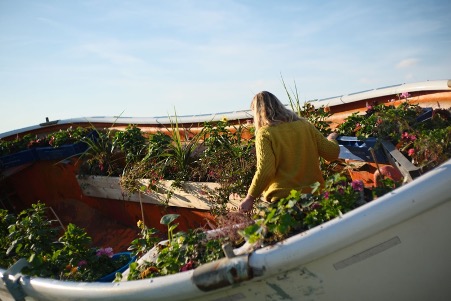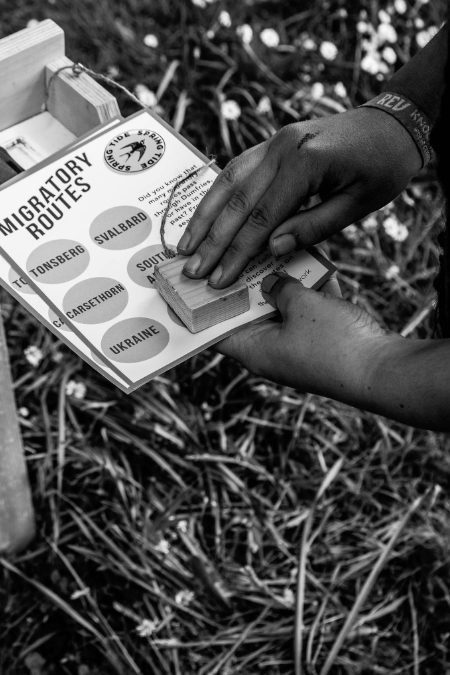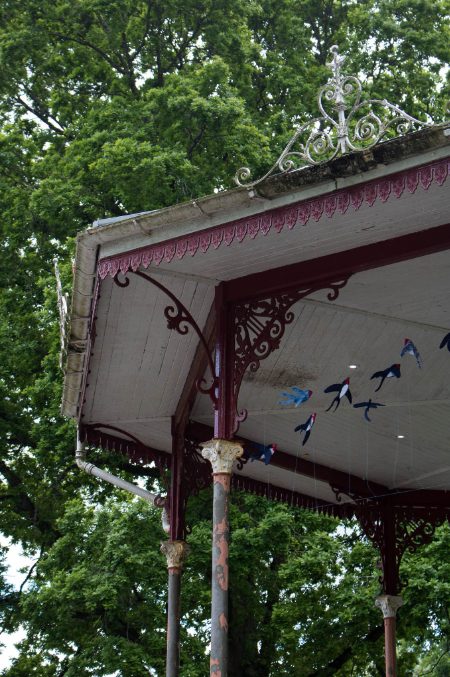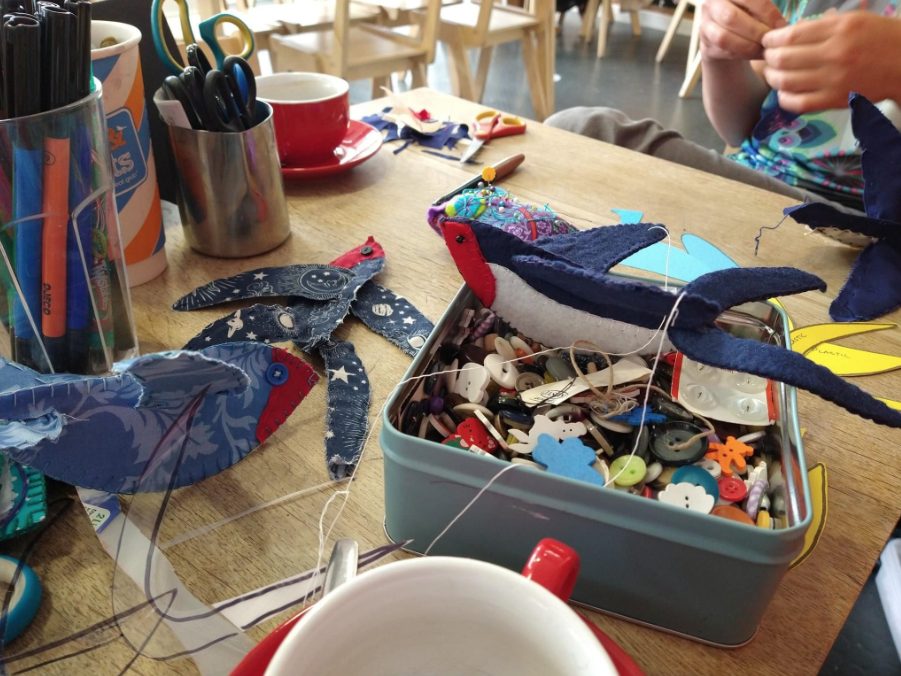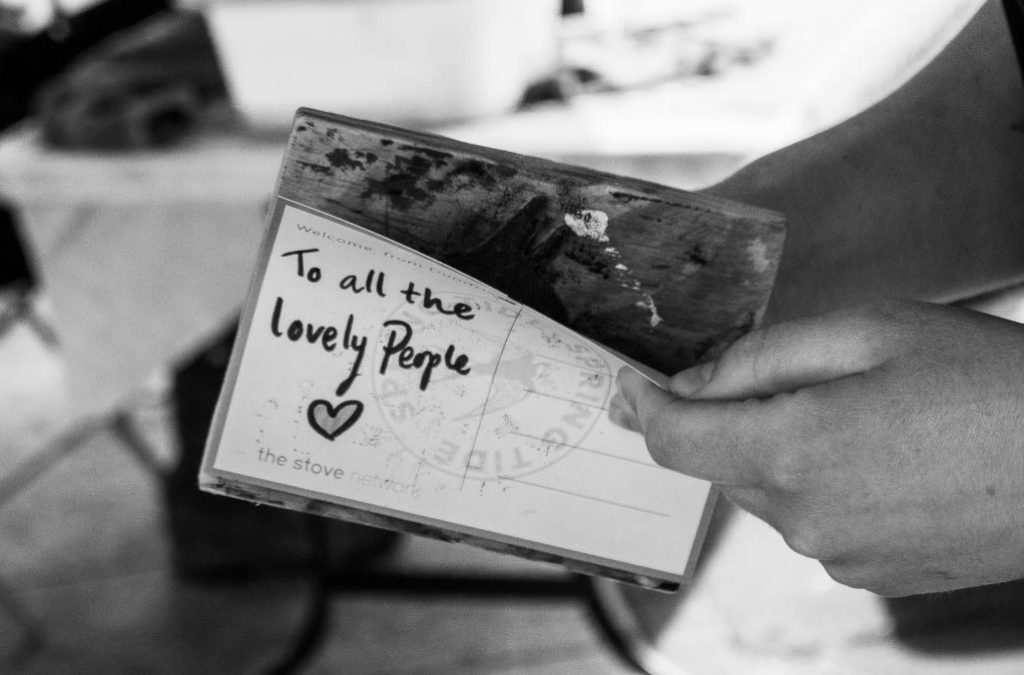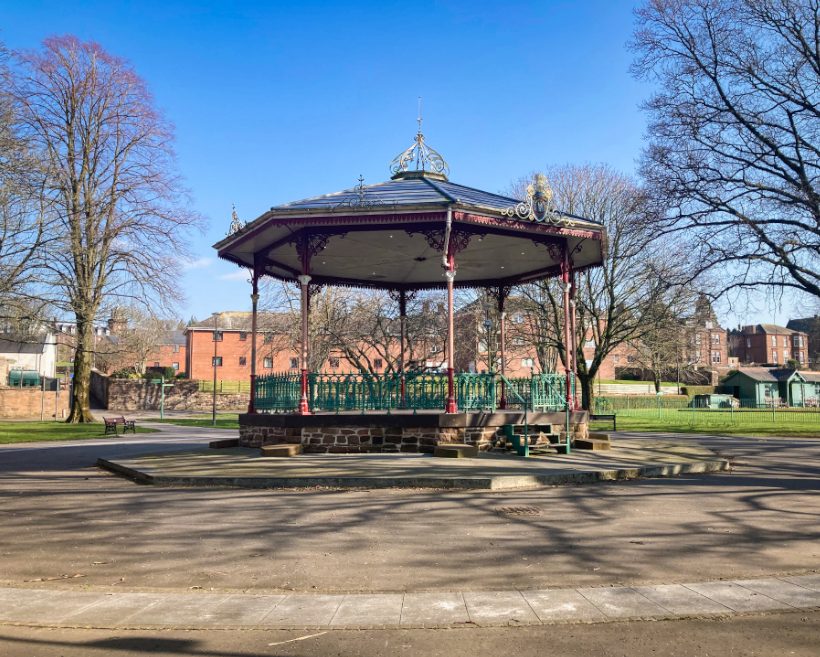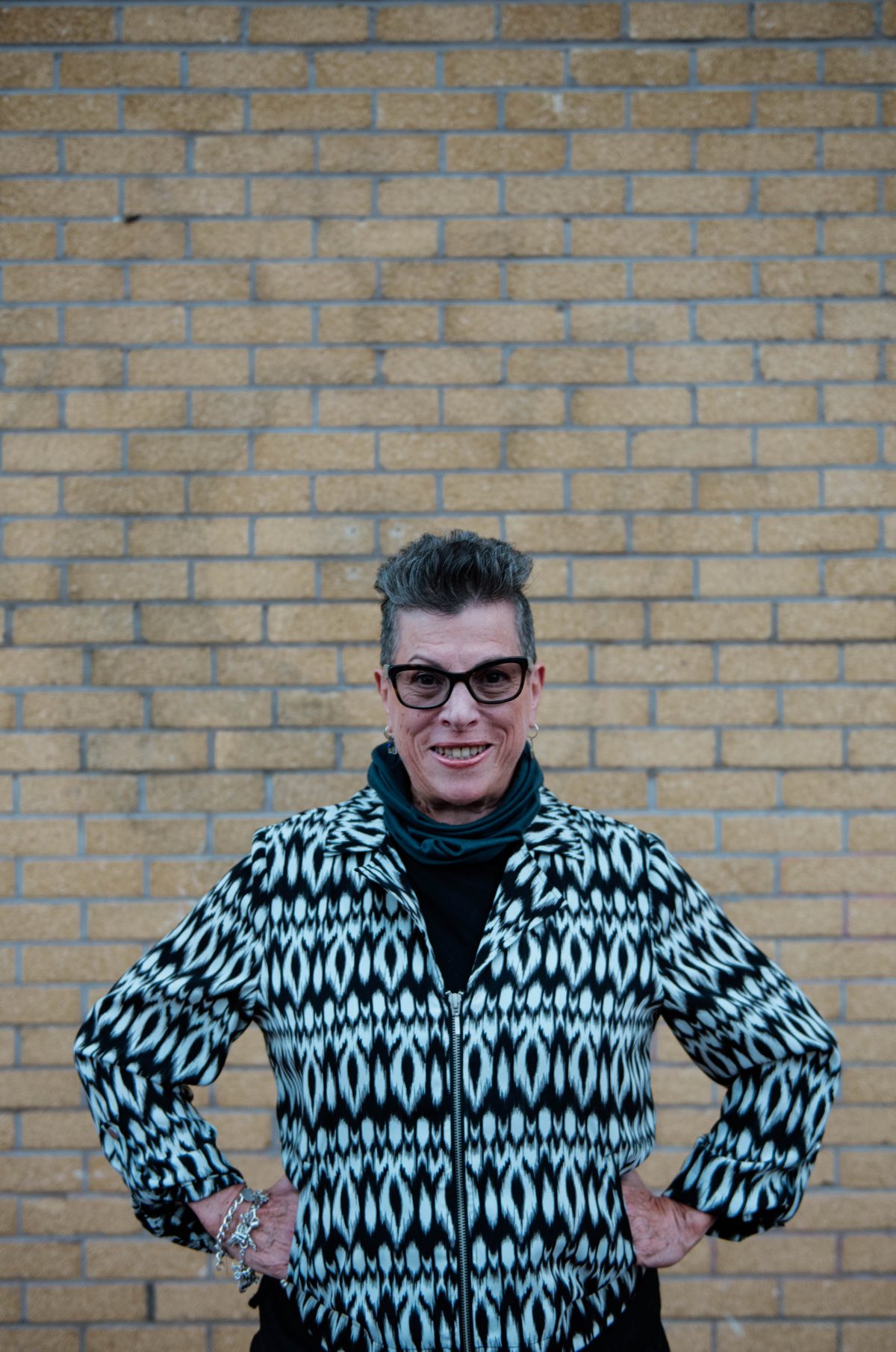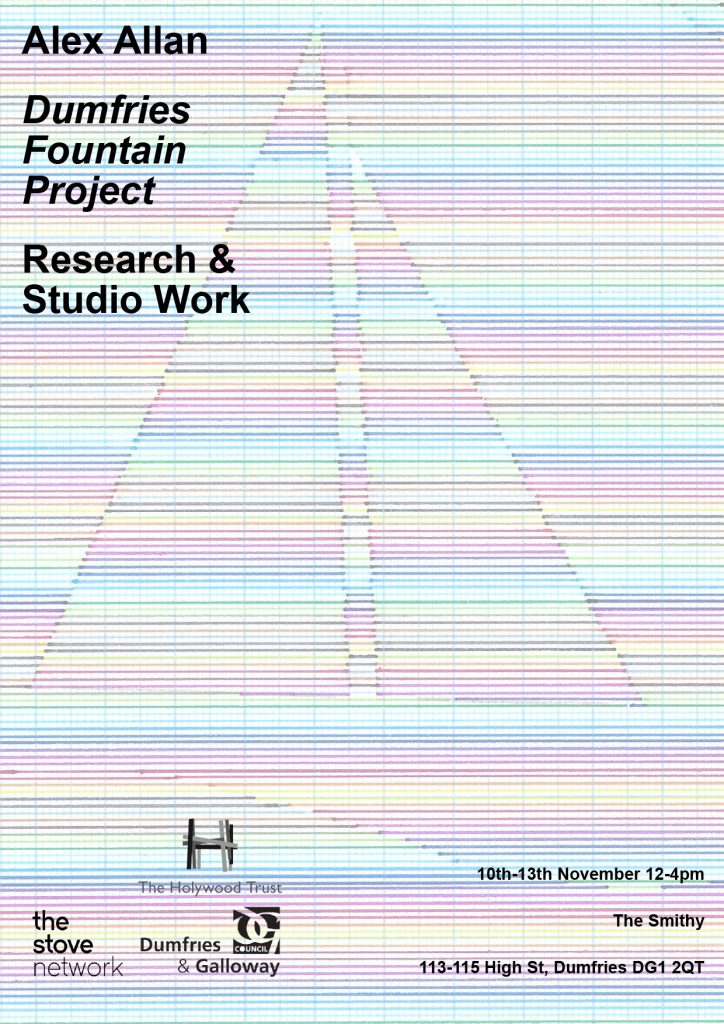(This Opportunity is Now Closed)
The Stove Network is seeking a creative practitioner(s) to design and develop a programme of their own creative work which will be delivered with and for the community of Stranraer.
About the Commission:
Fee:
A fee of £10,000 is offered for this commission. This fee is inclusive of all expenses, materials, and VAT (if applicable)
Timescale:
The work is to be completed within a six-month window – mutually agreed milestones at beginning of commission (e.g., research period, schedule of events planned by Creative Stranraer and how work of Waterfront artist fits with this).
Timeline: October – March 2024
The purpose of the commission is to creatively engage the local people in the town’s waterfront area.
The creative practitioner is invited to utilise their own creative practice (and/or collaborate with others), to inspire a new conversation in the town about the waterfront and how it could once again form a vital part of the town’s future.
The commission will form part of a wider process of re-imagining the Waterfront and the Waterfront Artist will join a small team comprising:
- Arts and Engagement Officer (AEO) – who has been working within the Stranraer community gathering the creative sector and working with them on creative community engagement with local people as part of the revitalisation of Stranraer. The AEO will support the Waterfront Artist in building relationships with local people/groups/partners, communications/marketing, and event production.
- Research, Recording and Reporting (R, R+R) commission holder – this is a special commission to support the work of the Waterfront Artist by helping to gathering information research leads that surface through the work and write up all the information/ideas and opinions that are generated through the creative work with the Waterfront.
- Support from The Stove Network – The Stove Network has been working in Stranraer supporting community-led regeneration projects for two years. The Stove is a leading Creative Placemaking organisation in Scotland and will actively support the creative engagement work on Stranraer Waterfront with the full range of services offered by the full Stove team (from production and communications to partnership building and operational systems)
- Support from DG Council and local community groups – the Local Authority is working in partnership with a diverse range of local community groups as a broad-based community leadership group to deliver capital projects(including Waterfront projects such as Stranraer Marina, Stranraer Watersports Centre and a marine research facility) that will underpin a future Stranraer. This group will support the creative engagement work on the Waterfront with information, contacts, partnership events and assets.
This commission builds upon the Dandelion community garden project, which occupied a section of greenspace located by the waterfront as a community garden. The ‘Unexpected Garden’ was utilised as a community events space, hosting workshops, gigs and other events.
Who we’re looking for:
We are in search of an experienced creative practitioner(s) with a strong background in community-embedded and social arts practices.
An ability to effectively engage and acknowledge the diverse voices of Stranraer’s populace is vital.
We seek an audacious individual(s) who can facilitate and envision exciting possibilities, instilling fresh connections with one of the town’s most valuable assets.
The commissioned practitioner(s) will have access to the Creative Stranraer ‘Hub’ located in the town’s High Street as well as significant support in community engagement as well as strategic interaction with the town’s established community events and festivals.
It is hoped the creative practitioner(s) will interact with Creative Stranraer’s programme of activities, weaving thematic considerations and activities, offering a diversity of experiences to ensure as wide a range of the community’s voices are heard.
What you’ll be doing:
The Creative Practitioner(s) will be expected to engage the community through creative activities, installations, interactive elements, and inspire conversation towards re-thinking the future use of the waterfront as a connected, culturally significant feature in the future of Stranraer.
The creative practitioner(s) are expected to:
- Embrace the Waterfront’s inherent value and its potential for rejuvenation, using your creative lens to inspire new ideas, spark conversations, and incite actions that will lead to its revival. (Background: up until 10 years ago the waterfront was predominantly an ‘industrial’ environment as the embarkation point for the Stena Line vehicle and passenger ferry to Belfast)
- Reflect the value of the Waterfront and the potential therein through a creative lens to inspire new ideas, conversations, and actions towards its regeneration.
Required outputs:
- A series of interventions situated at the Waterfront to encourage a new relationship to the site.
- Contribution to one large-scale public event situated at or near the Waterfront at the commission’s conclusion (NB additional budget is held to produce this event)
How to apply:
Deadline for applications: Thursday 24th August 2023 at 5pm
We would like to hear from creative practitioners/artists with an initial response to the project in the form of a short proposal.
We are looking for proposals from creative practitioners/artists working in any discipline.
We are interested in processes that are responsive and adaptive, demonstrate a commitment to collaborative working and give a clear idea of the creative skills and tools you bring to developing this. We are open to joint proposals or those from performance collectives but would want to hear how this might impact on the financial support for the individual freelancers involved.
We are open to video/recorded sound applications that address the brief and would encourage those who may have additional access requirements or support needs, both in application and anticipated through delivery of the project, to please let us know what we can do to make this opportunity as accessible as possible.
TO APPLY:
Please send by email to [email protected] with a maximum file size of 10MB, before Thursday 24th August 2023 at 5pm and include the following:
- Subject line: Waterfront Artist Stranraer
- A statement of no more than 600 words stating what interests you about the Waterfront Artist commission including a brief description of your practice and an initial idea of how you might approach the project.
- Current CV (max 2 pages)
- Up to 4 examples of past work that you feel best supports your application – this can be in any form (images, films, texts, testimonials, links to online video or other online resources).
- If you are willing, please also complete our Equalities Monitoring form as part of your application:
It’s important that our people reflect and represent the diversity of the communities and audiences we serve. We welcome and value difference, so when we say we’re for everyone, we want everyone to be welcome in our teams too. Wherever you’re from, and whatever your background, we want to hear from you. We will accept applications from anyone and everyone who feels they have the skills required to fulfil this role.
We will always send an email acknowledging receipt of any applications. If you do not receive an email, please contact us again. If you require specific support when making an application, please let us know.
If you have any questions you’d like answered before submitting your application, please contact us by email at: [email protected]
Background
Stranraer is at a pivotal point in its history. Ten years ago, the Stena Line ferry moved its operations from Stranraer to run their route to Northern Ireland from Cairnryan. A period of decline has followed for the town, but now Stranraer stands on the brink of a new chapter in its story with investment secured for a series of significant capital projects. These include projects for the Waterfront: a marina, a watersports centre, and a marine research facility. In the town centre the centrepiece project is the re-development of the former George Hotel into a culture and community centre including a bouldering centre and bunkhouse. These projects are all stitched into the community-led Place Plan for the town. The local community have worked in partnership with Dumfries and Galloway Council and South of Scotland Enterprise, and this commission is part of an ongoing commitment to keep the community right at the heart of the future vision for Stranraer.

